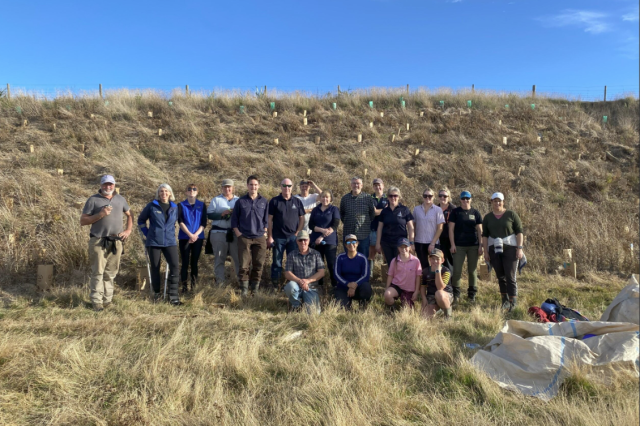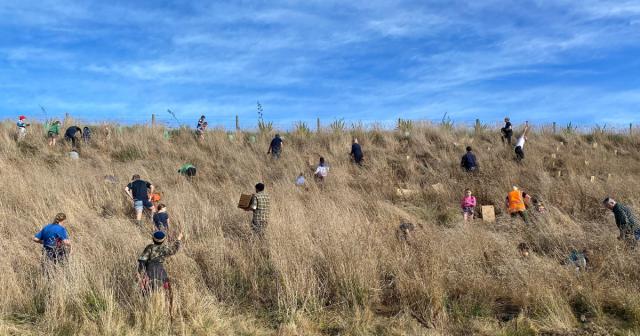Catchment groups across the country are working hard to deliver environmental outcomes such as improved water quality, soil health, biodiversity, climate change resilience and adaptation.

Steph Scott, Catchment coordinator, of the East Otago Catchment Group, established in 2019, says the catalyst for this group starting was to address some issues in the area around winter grazing and water quality.
“Some local farmers were keen to get a new group up and going as they could see the benefits of having a catchment group in the area,” she says. “It made sense for us to join with the Waikouaiti, Waihemo/Shag, Pleasant, Stony Creek and Post Office/Waipaku Creek catchments to become the East Otago Catchment Group (EOCG). We received some startup funding from Beef + Lamb New Zealand, which really helped.”
Steph says it was after the committee made the decision to contract a coordinator in 2022 that the EOCG really started to get some traction. “Like many catchment groups it can be hard to rely on volunteers alone to keep projects going, so having a coordinator to help with funding applications, liaise with stakeholders and build relationships in the community, means the EOCG has been able to keep its momentum.”
Currently the EOCG is delivering a programme called ‘Farming with Confidence’, which is helping around 25 farmers in the area with integrated farm planning and is funded by the Ministry for Primary Industries and uses B+LNZ farm plan resources.
Over a four-year programme, farmers are supported by experts to build their own farm plan that is robust enough to meet the requirements of the NZ Farm Assurance Plus Programme.

Steph says Nicola McGrouther from Creekside Consulting has been a great help in supporting the EOCG with running this programme.
“With changes in track for freshwater farm plans we’ll be looking to align the programme and support farmers through the process in the coming months,” she adds.
Another ongoing project is a collaboration between Waikouaiti Primary, Kāti Huirapa Rūnaka ki Puketeraki, Enviroschools and the catchment group to undertake water quality monitoring in the Waipaku/Post Office Creek Catchment. Steph says, “We’ve been monitoring it since July last year and the students have been busy recently analysing their data and getting ready for a presentation to the community.”
“Building on this work we’ve been lucky enough to gain funding from the Wai Connections fund administered by the Otago Catchment Community. This is being used to engage the team at Collaborations to do some GIS modelling in Waipaku/Post Office Creek catchment on overland flows, erosion hot spots, and where nutrients may build up.”
“The final product will be a tool that landowners can use to see where they should be prioritising mitigation on their property such as sediment traps, riparian planting, erosion planting etc.”
Community planting days from a key part of the group’s work. Recently they had a planting day with 100 students from Palmerston Primary School, catchment group members and volunteers from Rabobank at Anderson's Lagoon and have supported a group in Dunback with planting on a walkway along the Shag/Waihemo river.
In the upper Shag catchment, a project working with the Otago Regional Council science team and a couple of landowners to remove trout in two small tributaries is helping improve the fish populations of the Taieri flathead galaxid, a native non-migratory fish.
Steph says there is so much potential for future work in the East Otago catchment.
Along with rural waste and biodiversity workshops, more community planting days and ongoing local government and community collaborations, the EOCG is excited about what lies ahead and how they can continue to expand their work and deliver additional environmental outcomes.
B+LNZ has a range of resources for farmers and catchment community groups on the Knowledge Hub.